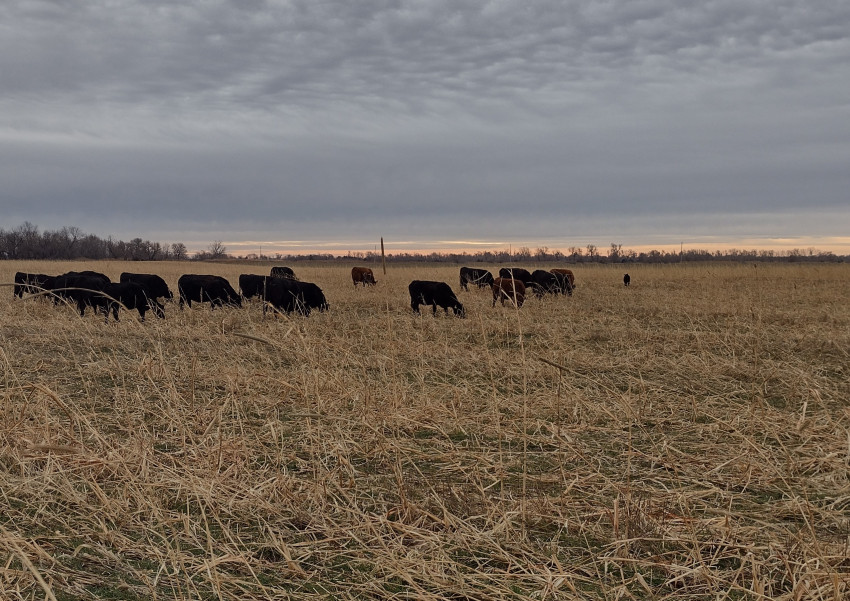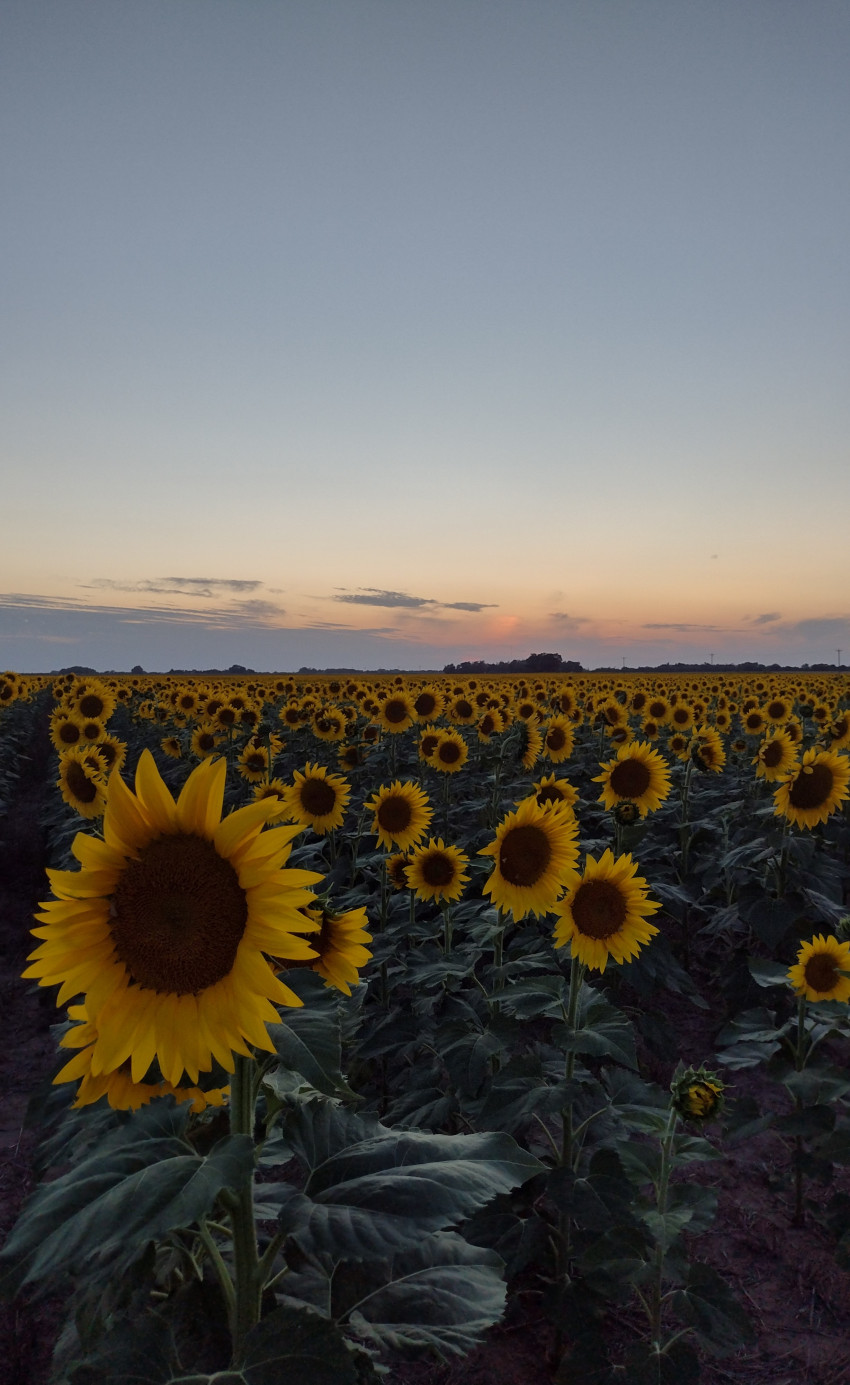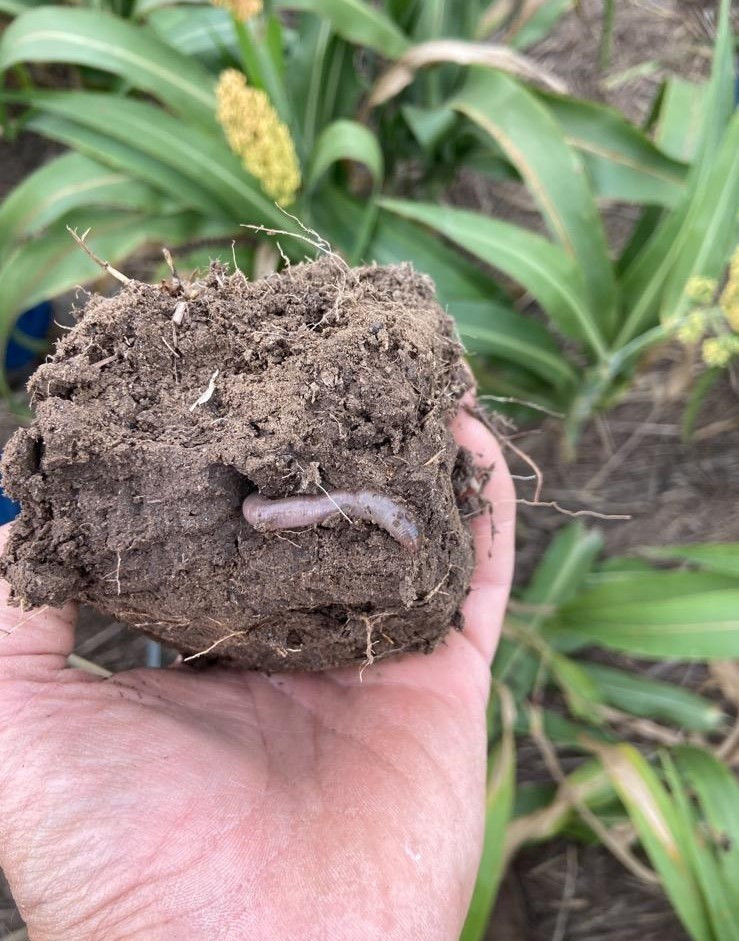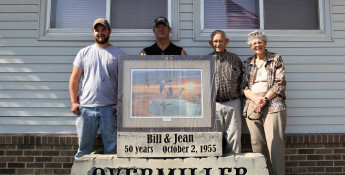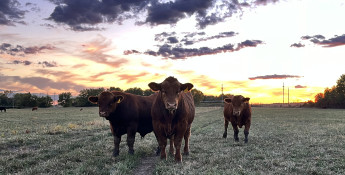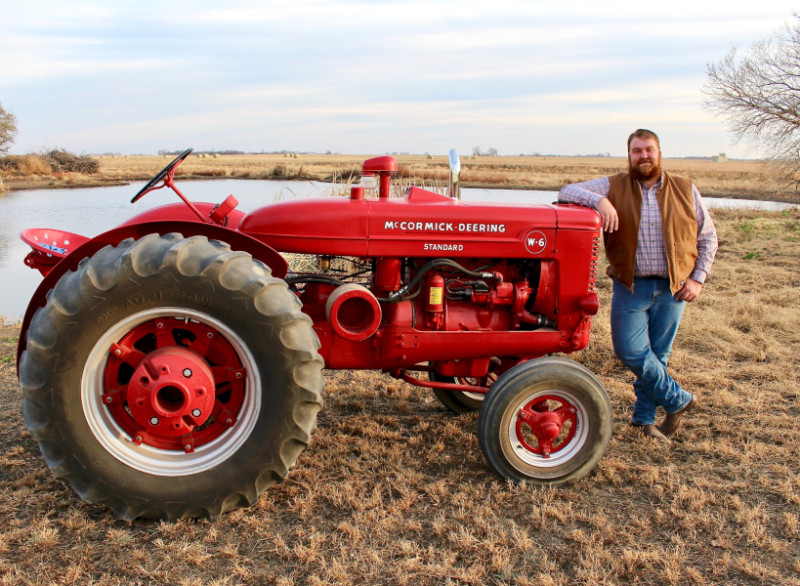By Shelby Varner on November 15, 2022
Cultivating Sustainable Soil and Minds
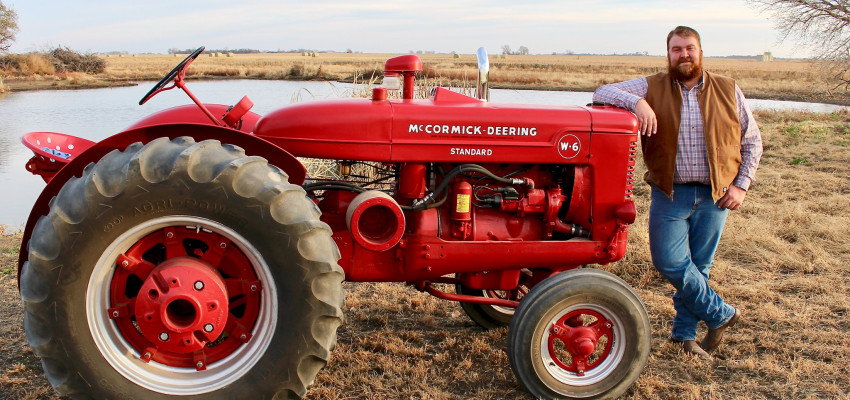
Did you know less than 2 percent of the population is involved in growing food and fiber? That’s not very many people doing a whole lot of work! This means the land that’s farmed by this small group of go-getters needs to be productive and healthy. One way farmers ensure their soil is healthy is through measuring soil quality. Have you ever considered what goes into “quality soil?”
More than five years ago, Austin Schweizer helped his farming operation in Reno County further expand their sustainability practices with the use of cover crops, which can add organic matter to the soil as well as improve soil structure. Rye, triticale, peas and barley are a few of the many cover crops that can be used. They also help suppress weeds and are beneficial for insects and wildlife.
“I was learning about soil health and started seeing results in better moisture holding capacity, better nutrient cycling and microbial activity in the soil was better,” Schweizer says.
Growing cover crops benefitted the soil and provided another benefit — it gave Schweizer’s cattle a grazing opportunity.
Schweizer didn’t stop with cover crops; he continues to learn how he can do more.
Sustaining and regenerating
One of the things Schweizer focuses on is improving the quality of soil through regenerative agriculture.
Schweizer shares it’s like sustainability because you’re trying to maintain soil quality while also continually improving.
One way he measures continuous improvement is through soil health tests, which helps him better understand what nitrogen is available in the soil. Knowing that allows him to reduce the amount he places on the field.
“We are able to lower our synthetic inputs because we have a more accurate assessment of what our regenerated soils are doing,” Schweizer says.
Lowering the use of manmade fertilizers reduces Schweizer’s overall costs and lessens the chance they are washed into the water system.
The land Schweizer farms is highly erodible, which makes cover crops more valuable. They help the ground be resilient throughout the ever-changing and sporadic Kansas weather. One heavy rain can wash away topsoil, but cover crops hold the soil firmly intact.
“We have our ground stable from cover crops, and that makes us more resilient from year to year,” Schweizer says.
Adding to sustainability
With most things farming and ranching, you learn from your mistakes and sometimes even the mistakes of others. Schweizer gains knowledge about cover crops, sustainability and regenerative agriculture from a variety of sources.
He is part of the General Mills regenerative ag program in Hutchinson where there are many other producers who are trying similar soil health practices.
“We can bounce ideas off each other and learn from each other’s mistakes and from everybody’s successes as well,” Schweizer says.
He says that allows them to learn quicker and become better faster.
Schweizer also serves on the Reno County Farm Bureau board which he has done for the last four years, and this year serves as president.
“After our meetings, we will sit around and we’ll talk about regenerative agriculture, we’ll talk about soil health, we’ll talk about no-till,” he says.
Tilling involves turning over soil, usually several inches, in a field which can lead to issues with erosion and loss of nutrients. No-till and regenerative agriculture tie together as they both factor into improving farming practices and soil health.
Serving on Kansas Farm Bureau’s Young Farmers and Ranchers committee also allowed him to network with people across the state and hear how others deal with sustainability throughout the different areas of the state.
“We challenge each other to become better.”
Helping others be sustainable
Schweizer is a Star Seed salesman and in this position, he helps others understand how cover crops can impact their operation.
“If anybody gives me a call, we usually end up talking for 20 or 30 minutes about cover crops.”
He says that conversation usually involves them talking about what he does and then trying to figure out what their goals are and figuring out a plan for what they need in the future.
“When you have different things come up in your environment a lot of those different conversations from different people can help you work your way through it,” Schweizer says. “When we started it was really very simple, simple minded.”
Now he’s learned how to use cover crops to prepare his soil for its next crop and enjoys sharing what he’s learned with others. However, he isn’t done learning, he continues to gather information so he can better serve the soil.

